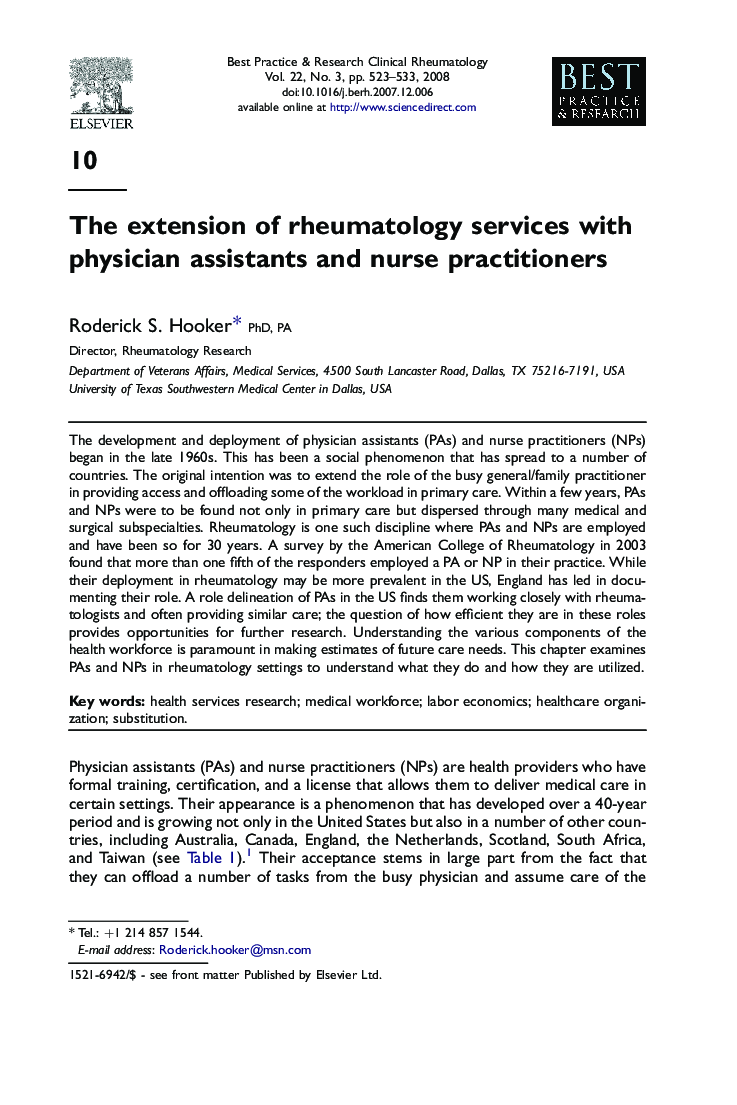| Article ID | Journal | Published Year | Pages | File Type |
|---|---|---|---|---|
| 3343271 | Best Practice & Research Clinical Rheumatology | 2008 | 11 Pages |
The development and deployment of physician assistants (PAs) and nurse practitioners (NPs) began in the late 1960s. This has been a social phenomenon that has spread to a number of countries. The original intention was to extend the role of the busy general/family practitioner in providing access and offloading some of the workload in primary care. Within a few years, PAs and NPs were to be found not only in primary care but dispersed through many medical and surgical subspecialties. Rheumatology is one such discipline where PAs and NPs are employed and have been so for 30 years. A survey by the American College of Rheumatology in 2003 found that more than one fifth of the responders employed a PA or NP in their practice. While their deployment in rheumatology may be more prevalent in the US, England has led in documenting their role. A role delineation of PAs in the US finds them working closely with rheumatologists and often providing similar care; the question of how efficient they are in these roles provides opportunities for further research. Understanding the various components of the health workforce is paramount in making estimates of future care needs. This chapter examines PAs and NPs in rheumatology settings to understand what they do and how they are utilized.
